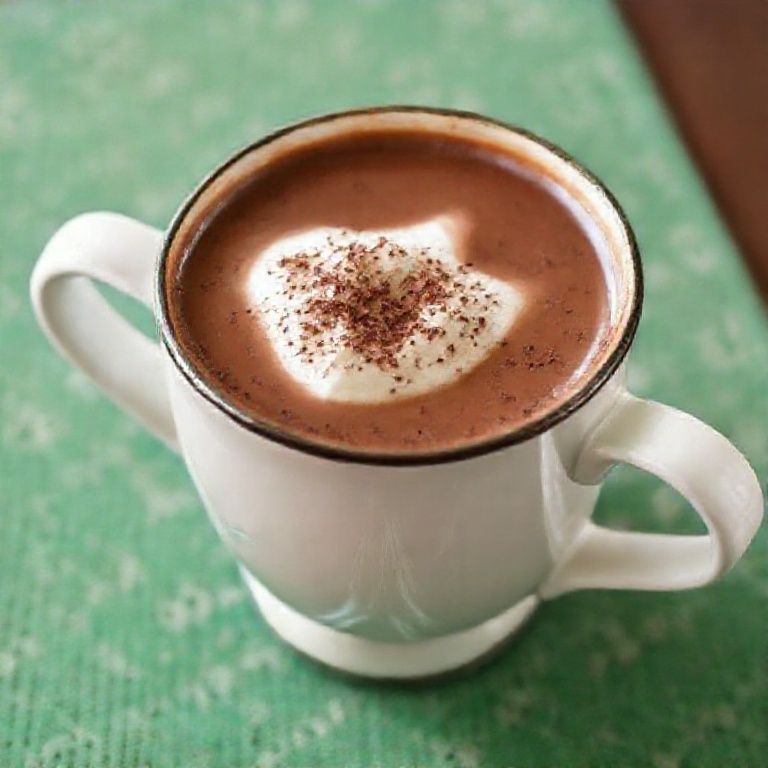Mexican hot chocolate is more than just a drink; it’s a cultural experience, a comforting ritual that dates back centuries. Unlike the instant cocoa mixes you might find in your local grocery store, authentic Mexican hot chocolate is a rich, complex beverage with a distinctive flavor profile. It’s a drink that tells a story, blending indigenous traditions with the spices and flavors brought by the Spanish. From the ancient Olmecs and Mayans to modern-day families, hot chocolate has held a special place in Mexican society, often enjoyed during celebrations and special occasions.
If you’re looking to warm up on a chilly evening or simply want to explore a new culinary adventure, then prepare to dive into the fascinating world of Mexican hot chocolate. We’ll explore its deep-rooted history, uncover the secrets behind its unique taste, and provide you with an easy-to-follow recipe so you can experience the magic of this beloved beverage in your own home.
A History Steeped in Tradition
The story of Mexican hot chocolate begins long before the arrival of the Spanish conquistadors. Cacao beans, the source of chocolate, were highly valued by the Olmec, Mayan, and Aztec civilizations. They used cacao to create a bitter, frothy drink, often flavored with chili peppers, herbs, and spices. This ancient beverage, known as “xocolatl,” was consumed during religious ceremonies, royal feasts, and even as a form of currency.
The Sacred Drink of Xocolatl
- Religious Significance: Xocolatl was believed to have divine properties and was often offered to the gods.
- Elite Consumption: This drink was primarily reserved for the upper classes and warriors.
- Preparation Methods: The process involved grinding cacao beans, mixing them with water, and then pouring the mixture repeatedly from one vessel to another to create a frothy texture.
The Spanish Influence and Evolution
When the Spanish arrived in Mexico in the 16th century, they initially found the bitter xocolatl unappealing. However, they gradually acquired a taste for it and began to adapt the recipe to their preferences. They added sugar, cinnamon, and other spices, transforming it into a sweeter, more palatable drink. This modified version of hot chocolate quickly gained popularity in Europe and became a fashionable beverage among the aristocracy.
Key Changes Introduced by the Spanish
- Sweeteners: The addition of sugar or honey to counteract the bitterness of the cacao.
- Spices: The introduction of cinnamon, vanilla, and other European spices.
- Heat: Serving the drink hot instead of cold, as was the custom in pre-Hispanic times.
The Essence of Authentic Mexican Hot Chocolate
What sets Mexican hot chocolate apart from other variations is its unique combination of flavors and textures. The use of traditional ingredients like Mexican chocolate, cinnamon, and chili peppers creates a complex and satisfying drink that is both comforting and stimulating. The frothy texture, achieved through the use of a traditional molinillo (a wooden whisk), adds another layer of sensory pleasure.
Key Ingredients and Their Roles
- Mexican Chocolate: This is the heart of the drink, often containing sugar, cinnamon, and almonds. Brands like Ibarra and Abuelita are popular choices.
- Cinnamon: Adds warmth and a subtle sweetness.
- Chili Peppers: Provides a touch of heat and enhances the other flavors (optional, but highly recommended!).
- Water or Milk: The liquid base of the drink, with milk adding richness and creaminess.
Easy Recipe for Homemade Mexican Hot Chocolate
Now that you understand the history and unique characteristics of Mexican hot chocolate, it’s time to make your own! This recipe is simple to follow and allows you to adjust the ingredients to your personal preferences.
Ingredients:
- 4 cups of milk or water
- 1 tablet (90g) of Mexican chocolate (such as Ibarra or Abuelita), coarsely chopped
- 1 cinnamon stick
- Pinch of cayenne pepper or chili powder (optional)
- Sugar or sweetener to taste (optional)
Instructions:
- In a medium saucepan, combine the milk (or water) and cinnamon stick. Heat over medium heat until simmering.
- Add the chopped Mexican chocolate and stir until it is completely melted.
- If using, add a pinch of cayenne pepper or chili powder.
- Use a molinillo (or a whisk) to vigorously beat the mixture until it becomes frothy. This usually takes about 2-3 minutes.
- Taste and add sugar or sweetener if desired.
- Remove the cinnamon stick and serve hot.
Conclusion
Mexican hot chocolate is more than just a beverage; it’s a journey through history and a celebration of culture. From its ancient origins as a sacred drink to its modern-day adaptation as a comforting treat, it has evolved into a beloved symbol of Mexican identity. By understanding its rich history and trying your hand at the recipe, you can truly appreciate the magic and depth of this exceptional drink. So, gather your ingredients, embrace the traditions, and savor every delicious sip of your homemade Mexican hot chocolate!
If you enjoyed this article, don’t forget to explore more inspiring stories on Life in Mexico!
IMAGE: A warmly lit kitchen scene with a steaming mug of Mexican hot chocolate on a wooden table. The background is slightly blurred, showing traditional Mexican pottery and spices. The chocolate is frothy and topped with a sprinkle of cinnamon. The overall mood is cozy and inviting, with a rustic, authentic feel. Colors should be warm and rich, with browns, reds, and creams dominating the palette. Style: Photo-realistic.


